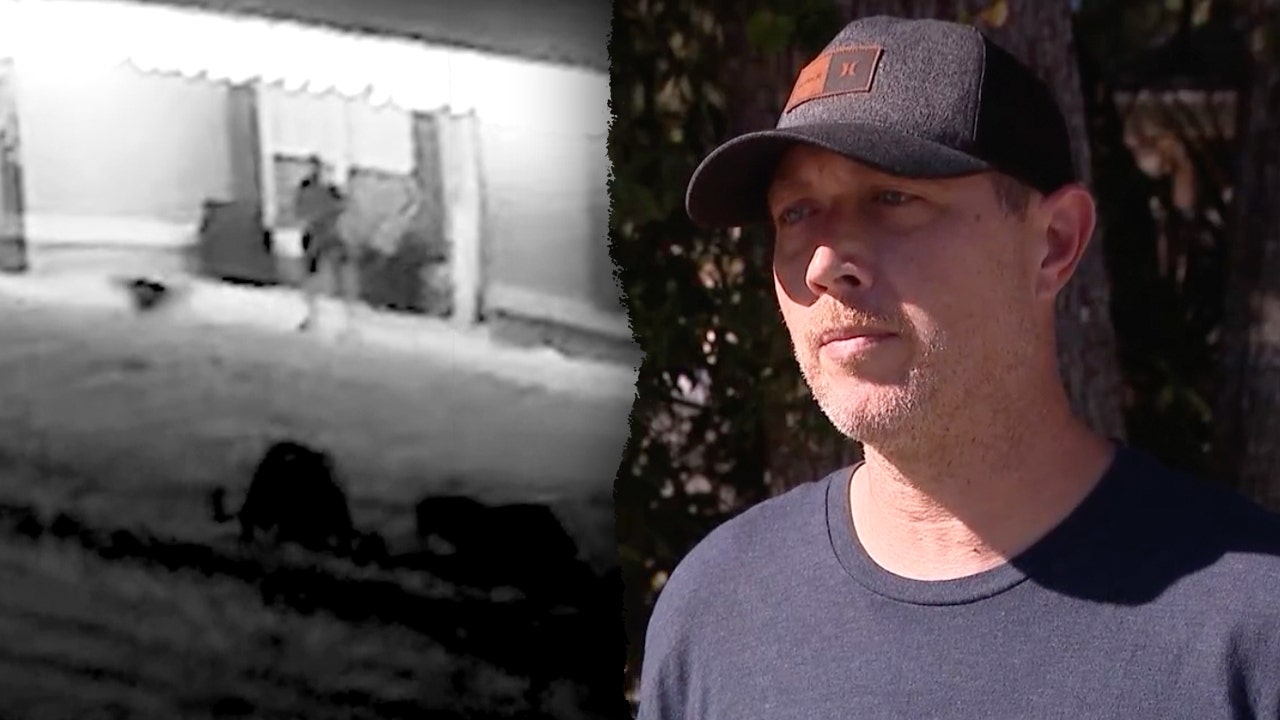Langtang, Nepal – On the morning of April 25, 2015, Nima Chhiring Tamang, 30, left his home in northern Nepal’s Langtang village to spend time with friends in the neighbouring village of Kyanjin Gompa – about a three hour walk through the Himalayas, in the shadow of the towering 7,234-metre (13,733-foot) Langtang Lirung peak.
Chhiring had recently completed his university education in the capital, Kathmandu, a three-day walk combined with an eight-hour drive away, and returned to his home in the mountains.
Chhiring was playing cards with his friends when a magnitude 7.8 earthquake struck the region, triggering a glacial avalanche that engulfed his village below. His mother, Karmu Tamang, was killed, along with nearly 300 others in Langtang, and 9,000 throughout the country. The avalanche brought an estimated 40 million tons of rock and ice bearing down on the village, carrying half the force of an atomic bomb and reducing the village to rubble.
Only one building was left standing, a single house sheltered under a rock face.
Ten years later, Langtang is bustling with life again, serving as a popular trekking destination for tourists from all over the world. Grazing yaks greet hikers as they walk beneath strings of prayer flags, pausing to examine the earthquake memorial – stacks of stones etched with Buddhist mantras, honouring the lives lost in the tragedy.
Nearly 300 people were killed in the earthquake which struck Langtang village in 2015 [Kate McMahon/Al Jazeera]
The village falls within the Langtang National Park, which was established in 1976 to protect the region’s rare and endemic flora and fauna. That led to a spike in tourism to the region in the 1980s, forever altering the lives of Indigenous inhabitants within the park’s boundaries.
But the village lacked significant facilities to host the steady stream of tourists.
Following the earthquake, Langtang embraced tourism-driven development, with nearly every house in the village turning into a guesthouse with modern amenities, including WiFi for those tourists who want to embrace the wild while retaining the comforts of home.
Yet some residents now express dismay that the village is unrecognisable, both aesthetically and culturally. Anxious locals worry that the rebuilding came at the expense of social cohesion in the village and led to communities abandoning traditional activities, like yak herding and foraging for medicinal plants.
“Everyone here only cares about money and hotels now. There’s lots of competition for tourists. Before life was simple, and there was peace,” said Chhiring. While Langtang had been welcoming tourists before the earthquake, the atmosphere was more communal and supportive, and families didn’t push to get tourists into their guesthouses, he explained.
In the aftermath of the quake, international aid poured into Nepal, with a host of development organisations implementing a top-down approach and dictating the rebuilding process – how, when, where, and what to rebuild. The Asian Development Bank committed more than $600m to “build back better.”
But aid was often delivered in the form of loans with interest and other strings, leaving Nepal increasingly indebted.
In Langtang village, a yak grazes in front of a memorial to the earthquake which devastated the area in 2015 [Kate McMahon/Al Jazeera]
Yet in Langtang, due to both its isolation and the determination of residents, the rebuilding efforts were largely organised by grassroots efforts, chiefly the Langtang Management and Reconstruction Committee – a community-led effort formed three months after the quake to facilitate rebuilding and raise funds. The committee was formed among the Langtangpa, the people of Langtangpa Valley – which contains around twenty-five villages, but with Langtang Village bearing the brunt of the disaster – who were living as refugees in Kathmandu and wished to facilitate a quick return to their land.
“In the weeks that followed the earthquake, government authorities said maybe the Langtangpa wouldn’t be able to return,” explained Austin Lord, an anthropologist who was hiking in Langtang at the time of the earthquake and later published a dissertation at Cornell University on the disaster and its aftermath. “This sparked a strong desire to self-organise, which ultimately proved quite successful.”
But locals didn’t have enough funding to build separate homes and businesses, so they combined the two projects, explained Lhakpa Tamang, secretary of the reconstruction committee.
That’s when problems began to arise, he suggested.
“With business, jealousy comes. Who’s gonna do better? Who is gonna earn more?” quipped Lhakpa. Quarrels happened over the size of prospective guesthouses, and community ties faltered. “There are always two sides of tourism: good and bad. Development sacrifices culture, but at the end of the day, people need money.”
A view of Kyanjin Gompa, close to Langtang village in the Langtangpa Valley [Kate McMahon/Al Jazeera]
Today, with nearly every building in Langtang Village is a guesthouse, families often sleep in the common room around a wood-burning stove during the peak seasons: March to May and September to November. Before the quake, the village mostly consisted of scattered tea houses, built with organic materials, primarily stone and timber. The landscape of Langtang is now dominated by concrete buildings with modern amenities, some rising three storeys tall from the ashes.
Still, the guesthouses brought badly needed income to families like that of Nurchung Tamang.
After losing everything, Nurchung, who now operates the Chhomo Valais Guest House in Langtang, told the story of how his family was evacuated to Kathmandu after the earthquake, but eventually decided to return to the rubble. The capital city was inundated with a wave of refugees fleeing the devastation across the countryside.
“We had no money in Kathmandu, so we stayed at the monastery with the monks,” said Nurchung. The people of Langtang Valley migrated from Tibet about a thousand years ago, and they are devout Buddhists in a Hindu-majority country, roughly 9 percent of the population.
After years of living in poverty in Kathmandu, families began trickling back into the devastated Langtang Valley. “There was nothing left at first, so we planted barley and potatoes and stayed in tents and did what we could to earn income,” explained Nurchung.
Nurching’s family started their rebuilding efforts with the help of foreign volunteers who had previously visited Langtang – that families with fewer international friends and connections received less external help was another source of contention – but obtaining materials was not straightforward. Langtang Village is a three-day hike from the closest road and sits at an elevation of 3,430 meters (11,253 feet), high enough to induce altitude sickness, especially during strenuous physical activity. Construction materials had to be carried on the backs of porters, strapped to mules, or flown in with helicopters at huge expense.
The mountains around Kyanjin Gompa, close to Langtang village [Kate McMahon/Al Jazeera]
Large machinery cannot be carried in at all, leaving the old Langtang Village still largely buried beneath the rubble. Instead of attempting to excavate the debris, a new village was constructed nearby. Because the village sits within Langtang National Park, the Langtangpa had limited space to expand. Residents were forced to rebuild in a cramped area free of avalanche debris and compete for space for their guesthouses.
Before the disaster, there were approximately 50 families in Langtang Village. Today, fewer than half remain. Some were killed, others moved away. Money was scarce and people were desperate, leaving much of the rebuilding process to be dictated by efforts to rapidly develop income-generating tourism infrastructure, as opposed to daily necessities like healthcare facilities, which have not been built in the village 10 years later. Today, there is a small clinic in neighbouring Mundu, but facilities are basic, and it is staffed by only a paramedic.
“There is an unfortunate trickle-down effect with aid, with it often not reaching where it’s needed,” explained Cherie Rezen, a US nurse who is leading a two-day healthcare mission to the village for the anniversary of the disaster. Rezen and Dr Amar Raut, co-founders of the NGO Embrace Nepal, are planning on doing health screenings for residents and carrying in a variety of heavy medical equipment with them, including an ECG machine. The elderly, in particular, rely on these health camps for medical care, as it is challenging for them to leave Langtang Valley.
Today, foreign tourists embarking on the roughly six-day Langtang Trek are beckoned into one newly built guesthouse after the next. Tenacious women with long black braids in traditional Tamang dress – the Tamang are one of Nepal’s 142 recognised ethnic groups and the majority of the population of the valley – hand out printed business cards for their guesthouses. With snow-capped peaks in the backdrop, signs across the valley read: “We have hot showers and Western food at no extra cost!”
“The disaster definitely accelerated the transition away from agro-pastoral livelihoods to a heavy dependence on the tourist economy,” said Lord.
Lhakpa, who lives in Kyanjim Gompa, serves customers at his Dorje Bakery [Kate McMahon/Al Jazeera]
The yak herders are dying out, and the next generation is more focused on gaining education that was inaccessible to their parents and grandparents, with many young Langtangpa opting to move to Kathmandu or go abroad to study. About 8 percent of Nepal’s population lives outside the country, driven away by a poor economy and a lack of job prospects. Many are enticed to stay only by carving out a role in the country’s tourism industry.
“Langtang had almost no tourism 50 years ago. Our grandmothers made us clothes with yak wool. Life was happier before, but this is the way of life now. When you need to go forward and develop, going back is not possible,” explained Lkhapa, the rebuilding secretary, who is a resident of the neighbouring Kyanjin Gompa.
Today, he hands out fresh cinnamon rolls to tourists in luxury alpine gear while recounting his role in recovery efforts, retrieving bodies when the snow finally melted.
“Langtangpas did the best they could to build back, and, after all their suffering, they built a new version of Langtang based on what they thought would bring them material security. They also built a version of Langtang for the future generation to come back and take over – most think a vibrant tourism economy is the best way to ensure their children come home.”
Climate change continues to threaten the survival of the village. A 2024 study found that it exacerbated the impacts of the avalanche, and the village faces increasingly warming temperatures and erratic snowfall. When asked why return at all, Chhiring thought for a moment and responded: “It’s our motherland, we have to respect that.”
Nepal village ravaged by 2015 earthquake now a reluctant tourist hotspot | Earthquakes News




